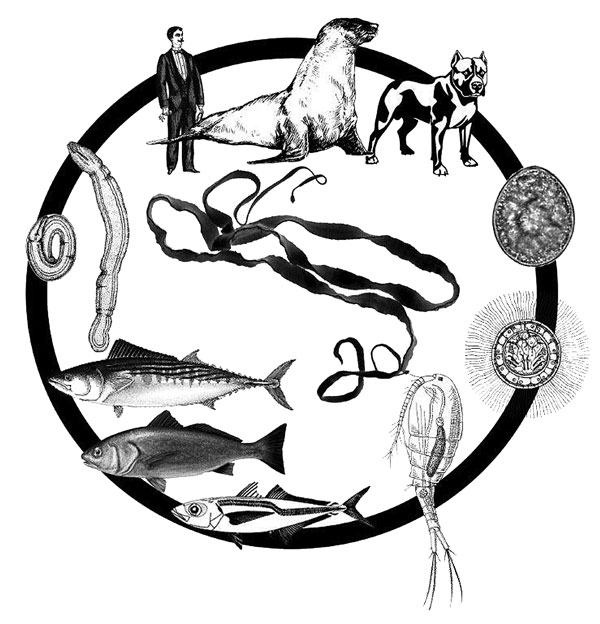Volume 21, Number 10—October 2015
Synopsis
Pacific Broad Tapeworm Adenocephalus pacificus as a Causative Agent of Globally Reemerging Diphyllobothriosis
Figure 2

Figure 2. Life cycle of the Pacific broad tapeworm. From top: definitive hosts (otariid seals, humans, dogs); egg; coracidium; potentional first intermediate host (copepod); second intermediate hosts (Sarda chiliensis, Sciaena deliciosa, Trachurus murphyi); encysted plerocercoids in body cavity of fish Adenocephalus pacificus.
Page created: September 22, 2015
Page updated: September 22, 2015
Page reviewed: September 22, 2015
The conclusions, findings, and opinions expressed by authors contributing to this journal do not necessarily reflect the official position of the U.S. Department of Health and Human Services, the Public Health Service, the Centers for Disease Control and Prevention, or the authors' affiliated institutions. Use of trade names is for identification only and does not imply endorsement by any of the groups named above.